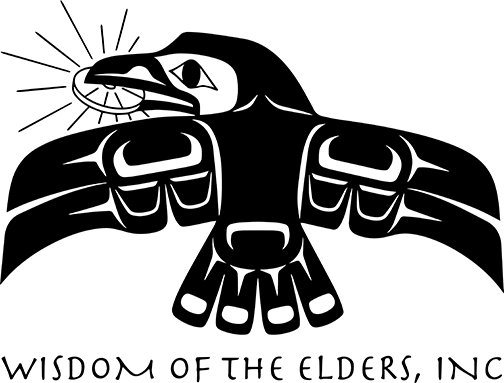The History of the Confederated Tribes
 Hello, my name is Elaine LaBonte. I’m from the Confederated Tribes of Grand Ronde, which is in northwestern Oregon. I’m going to talk about the history of the Confederated Tribes, which we originally had over thirteen and a half million acres of the homeland from the Oregon-California border up to the south bank of the Columbia River, between the two large mountain ranges—the Coastal and the Cascade Mountain Ranges.
Hello, my name is Elaine LaBonte. I’m from the Confederated Tribes of Grand Ronde, which is in northwestern Oregon. I’m going to talk about the history of the Confederated Tribes, which we originally had over thirteen and a half million acres of the homeland from the Oregon-California border up to the south bank of the Columbia River, between the two large mountain ranges—the Coastal and the Cascade Mountain Ranges.
As you can imagine that kind of land base, there is a lot of different geographic areas, which boils down to a lot of different plant species that grow in the different areas. So today I’m going to talk about the different cultures that emerged based upon the abundance of particular plant materials in their particular region, and how they ended up on the Grand Ronde Reservation, which was a sixty-nine thousand-acre reservation, and how over twenty-six tribes of Indian people came together with twenty-six different languages and twenty-six different cultures and emerged into what we have now as the Grand Ronde community.
One of the things that really illustrates the different cultures that emerged as a result of the different geographic areas we see in our basket weaving in Grand Ronde. If you start at the southern Oregon tribes, which were the Rogue River Valley tribes, the Shasta tribes, and the Lower Umqua people, primarily what kind of baskets that you see are baskets made out of willow and hazel sticks, and willow roots. And they used a lot of overlays like bear grass and woodwardia fern, and those kinds of things that you’ve seen typically in a dryer area.
Then as you move up into the Willamette Valley, which was at one time, a huge wetland, what you see as the most characteristic basket weaving for the Kalapuya people and the Upper Umpqua people are baskets made out of tules and rushes, and juncas, and it’s a much softer type of a material, which did not really allow for a lot of design in it. However, they were just as functional as those baskets that you found down in southern Oregon tribes.
Then as you move up a little bit further you still have your wetland plants, but then you also get into a lot of cedar, and cedar is one of the most important, if not the most sacred material and medicine that we have. So as you get up further you get into cedar bark baskets. Cedar bark was what we made our skirts out of. We’d pound the cedar bark and you’d have these beautiful skirts in the end; cedar bark capes, cedar bark hats.
The baskets were made out of cedar roots most often and in any of these cases, the cooking materials were made out of baskets. What they would do was heat stones – a particular kind of a stone – heat the stones, put them into the basket, and boil the soup and cook it in that manner.
Often they would layer the baskets with skunk cabbage leaves or cymbal berry leaves, which are very large leaves, and that would protect the basket and it would keep the food from sticking. That you would find throughout our ceded homelands.
Baskets are just one example of many different examples of different cultures. Trading was extremely important amongst all those tribes—and even with the tribes further east. There was an extensive trade network and how trade was determined was on the abundance of a particular plant in the area.
So in Southern California, acorns, the preferred acorn was really abundant. In the Willamette Valley camas was our staple food and it was very abundant. So acorn and staple or acorn and camas would be often traded. Not that we didn’t have acorns in the Willamette Valley, but they weren’t the preferred acorn that was, the acorns up there were more bitter. Then if you get up further, wapato, which is also an extremely important food, was more abundant in the northern Oregon area. So wapato was also a very important trade item.
Salmon, of course, was important to trade. Then with the eastern tribes—obsidian is huge over there—so obsidian was also one of those things that we traded quite often. It was a huge network—separate tribes, but we still all came together at different times.
We always married outside of our own tribe. So you’ve got a lot of intermixture of people right now and that’s what you have in Grand Ronde right now. We have a mixture of many of our different original tribes, and even tribes outside of our ceded homelands.
